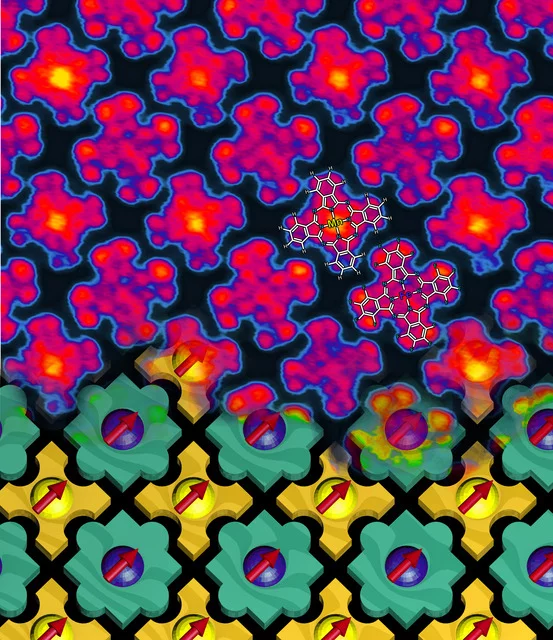Researchers switch the quantum properties of magnetic molecules
Researchers from the Paul Scherrer Institute and the Indian Institute of Science Education and Research (Pune, India) have managed to ‘turn off’ the magnetization of every second molecule in an array of magnetized molecules and thereby create a ‘magnetic chessboard’. The magnetic molecules were so constructed that they were able to find their places in the nano-chessboard by themselves. Thus the nano-chessboard effectively built itself together. The researchers were able to manipulate the quantum state of just a part of the molecules in a specific way. Being able to specifically alter the state of individual quantum objects is an important prerequisite for the development of quantum computers. Such computers would rely on the laws of quantum physics and could perform some calculational tasks very much faster than present-day computers. However, today we are very far from being able to build quantum computers that are in reality comparably powerful for particular calculations. The scientists have published their results in the journal Advanced Materials.
Read the full story
Reference
Two-dimensional Supramolecular Electron Spin ArraysC. Wäckerlin, J. Nowakowski, S.-X. Liu, M. Jaggi, D. Siewert, J. Girovsky, A. Shchyrba, T. Hählen, A. Kleibert, P. M. Oppeneer, F. Nolting, S. Decurtins, T. A. Jung, N. Ballav
Advanced Materials 2013, Advance online publication 22. Januar 2013, DOI: 10.1002/adma.201204274
Contact
Christian Wäckerlin, Laboratory for Micro- und NanotechnologyPaul Scherrer Institute, 5232 Villigen PSI, Switzerland
Tel. +41 56 310 52 44, christian.waeckerlin@psi.ch
Prof. Dr. Thomas Jung, Laboratory for Micro- und Nanotechnology
Paul Scherrer Institut, 5232 Villigen PSI, Switzerland
Tel. +41 56 310 45 18, E-Mail: thomas.jung@psi.ch
Prof. Dr. Nirmalya Ballav, Department of Chemistry,
Indian Institute of Science Education and Research, 411 008 Pune, India
Tel: +91 20 2590 8215, E-mail: nballav@iiserpune.ac.in
